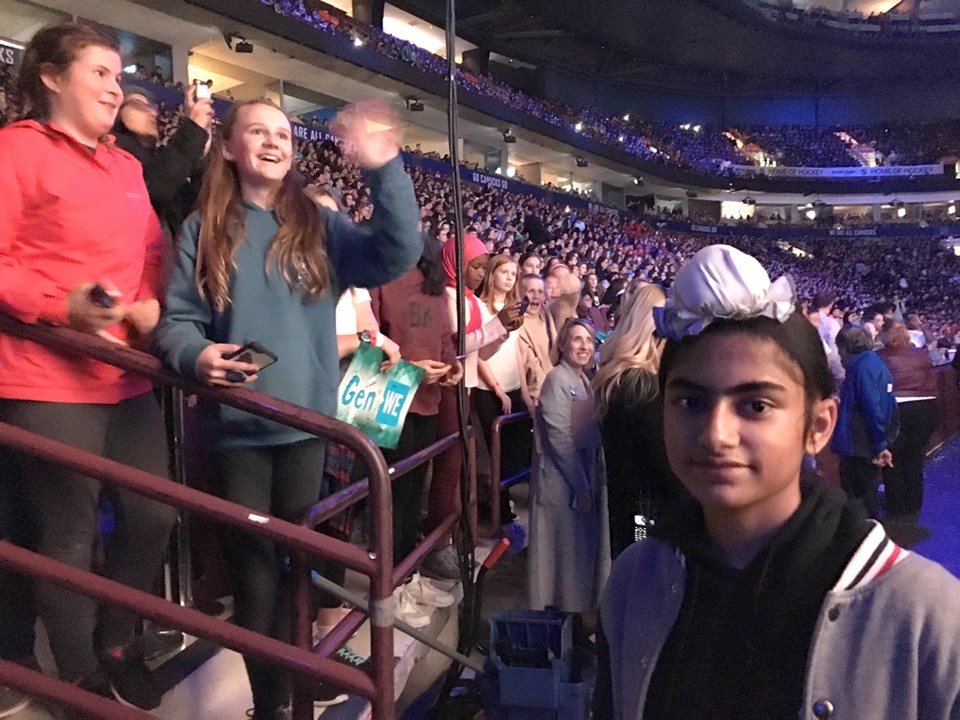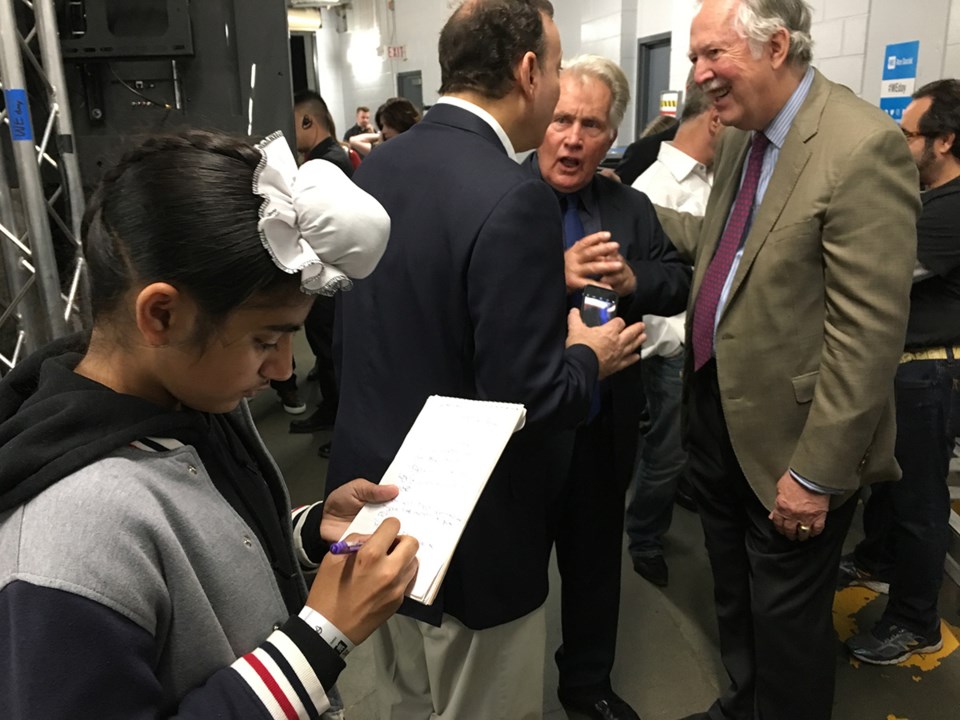Amardeep Bains and I are sitting in one of guest suites that rim the interior of Rogers Arena. It’s WE Day, a motivational extravaganza that empowers teenagers to “transform communities and change lives”, and we’re early.
Amardeep is 13. Intrigued by Rory Gilmore’s decision to become a journalist in the television series Gilmore Girls, he’d reached out to me several days earlier to ask if he could jobshadow us at the Courier office. However, as exciting as being a journalist can indeed be, reporters spend an awful lot of time staring at our computer screens. Writing is not a team activity.
I thought that joining me at WE Day, with the chance to go backstage, would be much more likely to transform his interest in journalism into a determination to make it happen.

As we waited for the throngs of teenagers to fill the 20,000 seats, I told Amardeep about a fascinating story in the New York Times Magazine that had given me pause: Why Are More American Teenagers Than Ever Suffering From Severe Anxiety?
The feature doesn’t put blame on the profiled teenagers and families. It acknowledges that the teens’ fears and anxieties are very real, and often debilitating. It also doesn’t try to find easy answers.
However, it does explore the enormous influence of social media on Amardeep’s generation.
The article quotes Jean Twenge, a psychologist who recently wrote iGen, a book about the generation that’s growing up in the Millennials’ wake. Although she was skeptical at first about a correlation between growing unhappiness rates and the increasingly ubiquitous presence of Facebook, Instagram and Snapchat in teenagers’ life, she says evidence is mounting that there’s a connection.
The feature also gently asks whether parents, in their hopes of providing an anxiety-free childhood, are actually contributing to teens’ high anxiety levels.
“Anxiety is all about the avoidance of uncertainty and discomfort,” the feature quotes Lynn Lyons, a psychotherapist and author. When parents protect children from anxiety-inducing situations, “we don’t help kids learn to cope or problem-solve in the face of unexpected events.”
Kids, it seems, need practice coping with fears and anxieties so that when the big stressors come — worrying about whether they’ll have the grades to get into post-secondary schools, finding a job, or being dumped in a relationship — they don’t feel as overwhelmed.
I had been fascinated by the article and, waiting for WE Day to start, asked Amardeep about it.
“We take everything so personally,” he says. “If we see Selena Gomez, how famous she is, we want to be famous, too. When you see a photo of Taylor Swift in her house having a 4th of July party with her friends, you think ‘This is what I want.’ Then, when we fail at something, we think we’re never going to be famous so we move on to the next thing. We’re like a train.”
The media that iGen consumes — everything from television to Instagram —provides a distorted view of the world. Take the show Gilmore Girls, which is about a single mother, Lorelai Gilmore, and her daughter Rory. “How did Lorelai afford the that big old house on the salary of someone who works at an inn? But we think, ‘If Lorelai Gilmore has it, I want it, too….’
“You never hear someone say, ‘I want to be a construction worker’ because then you’ll never be as rich as you want to be. That’s what we’re so scared of, the future.”
These high standards are everywhere in our culture, he says. They are what is held up as normal even though they don’t reflect most lives.
Amardeep says “Our generation has to learn how to be ourselves but we’re too busy being someone else. Try everything you can and don’t be devastated if you fail.”

WE Day was founded by brothers Marc and Craig Keilburger. They were not yet teenagers when they felt inspired to petition the Canadian government to fight against child labour, and, invigorated by their success, created what became Free the Children. Empowering youth to help others became their life mission.
They founded We to Me, which has transformed itself into WE Day, a loud, boisterous one-day philanthropy rally to reward and encourage young people to do some good in this world. Every teen in Rogers Arena had to earn their way there by demonstrating some of those leadership skills.
“Change begins with you,” said nine-year-old This Is Us actor Lonnie Chavis, who focused on the legacy of Muhammed Ali. “He understood the importance of spreading kindness and compassion.”
Ali’s exhortation to “Don’t count the days; make the days count” epitomized the goal of We Day.
“Decide today that you’ll lead a life filled with passion,” said Vancouver businessman and philanthropist Lorne Segal, who brought WE Day to this city. “As someone once told me, ‘If your dreams don’t scare you, they’re not big enough.’”
However, to bring it back to the points that Amardeep was making, WE Day also illustrates that when it comes to iGen, the medium needs to be the message, too. It was famous people telling the teens to be themselves. Presentations were brief, the stagecraft was bedazzling and the music was designed to make the audience feel part of something momentous and life-changing.
As the lights dimmed for the musical acts — a Gord Downie tribute, Sonreal, Grace Vanderwaal and Hedley — the arena seats sparkled with dancing lights. It was the teenagers waving their smartphones the way their grandparents held up lighters at a rock concert. There were thousands of phones, their glow turned outward for a few minutes at least.



